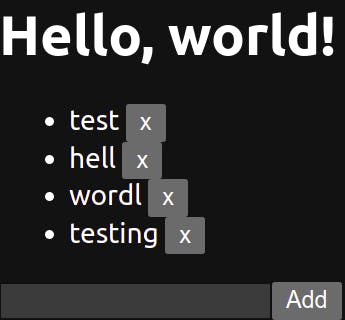Multiple ways of using React useState hook in our projects
Let's summarize multiple ways of using React useState hook in our projects.
While I was learning React and building projects, I found multiple ways of using React useState hook in our projects.
So I wanted to share with my fellow developers and myself in future cause I will be working on multiple libraries, So I may forget these things 😂😂
What is React hook?
Hooks are a new addition in React 16.8. They let you use state and other React features without writing a class.
Example:
Just like we used states in our Class Based Components,
import React from 'react';
class Test extends React.Component {
constructor(props) {
super(props);
this.state = { test: 'This is state' };
}
onClick = () => this.setState({ test: 'State changed on click' });
render() {
return (
<div>
<h1>Hello, world!</h1>
<button onClick={this.onClick}>{this.state.test}</button>
</div>
);
}
}
export default Test;
We initialize states in Functional components like this,
import { useState } from 'react';
function Test() {
const [state, setState] = useState('This is state');
const onClick = () => setState('State changed on click');
return (
<div>
<h1>Hello, world!</h1>
<button onClick={onClick}>{state}</button>
</div>
);
}
export default Test;
Just so you know, We can initialize multiples states with useState,
function Test() {
const [state, setState] = useState('This is state');
const [state1, setState1] = useState('This is another state');
const [state2, setState2] = useState('And another state');
const onClick = () => setState('State changed on click');
return (
<div>
<h1>Hello, world!</h1>
<button onClick={onClick}>{state}</button>
</div>
);
}
This was pretty simple and straight forward way of using useState React hook.
💡 Some important points to keep in mind:
We never update states directly.
state = 'whatever'This won't re-render our component. Hence, it won't be reflected in our browser.
State updates are asynchronous. So we can't update state in some like of loops, conditions, or nested functions. React development server will through an error.
Uncaught (in promise) Invariant Violation: Maximum update depth exceeded. This can happen when a component repeatedly calls setState inside componentWillUpdate or componentDidUpdate. React limits the number of nested updates to prevent infinite loops.Only call Hooks from React functional components or our own custom Hooks.
React hooks doesn't work inside Class Based Components.
🥳🥳 Let's see some other ways of using useState hook in our projects.
Passing callback function inside setState function
Let me explain how we can use callback function inside setState function. Let's build a simple todo list that looks something like this,

There is no styling, just plane html syntax.
import { useState } from 'react';
function Test() {
const [list, setList] = useState([]);
const [input, setInput] = useState('');
const onSubmit = (event) => {
event.preventDefault();
setList((prev) => [...prev, input]);
setInput('');
};
const onChange = (event) => setInput(event.target.value);
const onDelete = (index) => (event) =>
setList((prev) => [...prev.slice(0, index), ...prev.slice(index + 1)]);
return (
<div>
<h1>Hello, world!</h1>
<ul>
{list.map((list, index) => (
<li key={list + index}>
{list} <button onClick={onDelete(index)}>x</button>
</li>
))}
</ul>
<form onSubmit={onSubmit}>
<input type="text" value={input} onChange={onChange} />
<button>Add</button>
</form>
</div>
);
}
export default Test;
We can initialize state value with any valid datatype.
We usually pass a value and that value becomes the new state. But setState function also takes a callback function that receives previous state as an argument and whatever the function returns will the next value for that state.
Passing setState function as a props for child component
This technique is mainly useful for lifting child state in its parent component.
// parent.jsx
import { useState } from 'react';
import Child from './child';
function parent() {
const [parent, setParent] = useState('hello');
return (
<>
<h1>{parent}</h1>
<Child setParent={setParent} />
</>
);
}
export default parent;
// child.jsx
import { useState, useEffect } from 'react';
function child(props) {
const [child, setChild] = useState('whatever');
useEffect(() => {
props.setParent(child);
}, []);
return <h3>{child}</h3>;
}
export default child;
If you try to run these files, Both h1 and h3 will render 'whatever'. The reason is, initially the parent state value is 'hello', But when child component gets mounted,
useEffect(() => {
props.setParent(child);
}, []);
this code gets executed and setParent state function which is passed as a props in its child component, sets the parent state value same as the child state value. Therefore, both the child and parent component renders the same value as 'whatever'.
Conclusion
useState hook is one of the most important hook for functional component based projects. There are many more ways of using useState hook in our projects. This is just the beginning. I have just covered the important use cases. So, that's it on this topic. Let me know if I missed something.
Thank you for reading this blog. ❤️❤️
